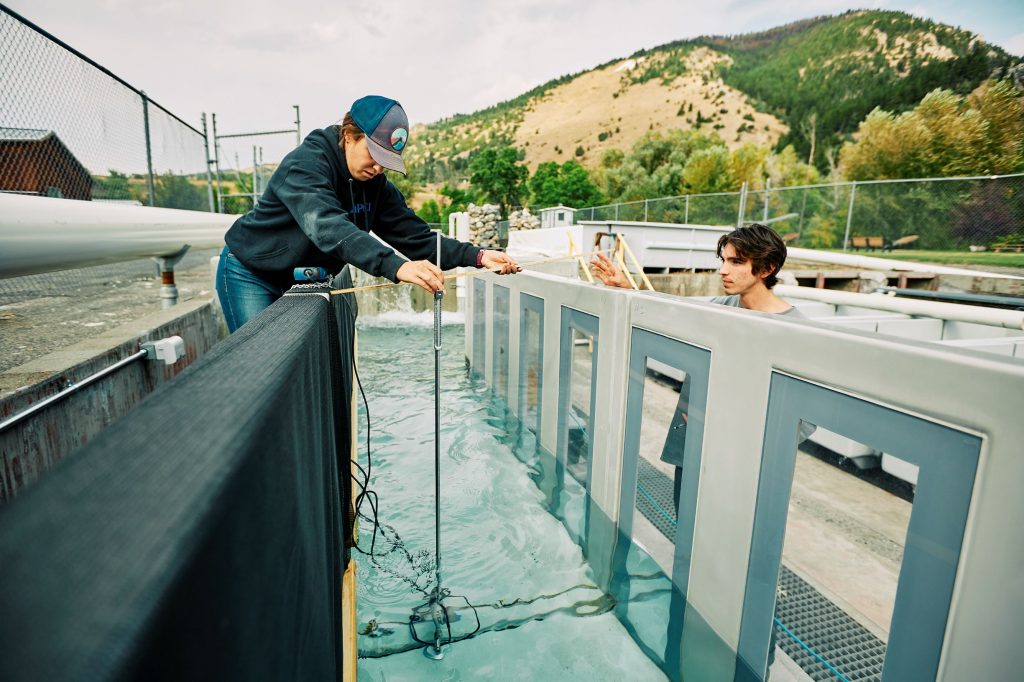
Researchers in Montana have a new tool for designing fish passage structures that meet the needs of both fish and agricultural producers. A feature article by the MSU News Service highlights a recently completed artificial waterway at the U.S. Fish and Wildlife Service’s Fish Technology Center on the outskirts of Bozeman, which researchers can use to test the designs of small fish passage structures that allow grayling and other species to overcome irrigation structures that might otherwise hinder their seasonal movements.
The state-of-the-art upgrade will facilitate ongoing research by Montana State University’s Fish Passage and Ecohydraulics group, who have collaborated for more than a decade. The group includes researchers from the U.S. Fish and Wildlife Service, MSU’s Departments of Ecology and Civil Engineering, and WTI. WTI Road Ecologist Matt Blank has been on the team since its inception, and he is currently one of the team members on a new project to redesign fishways to use less water. As he stated in the news article, “”If we can get the fish to swim through less water, that’s a win. We want to find solutions that benefit not only the fish but the irrigators who use the river, and this study is exploring how to do that.” More information about current and past research is available on the MSU Fish Passage and Ecohydraulics group webpage, and on WTI’s project webpages (Fish Passage Research and Fish Passage Research Phase 2).
